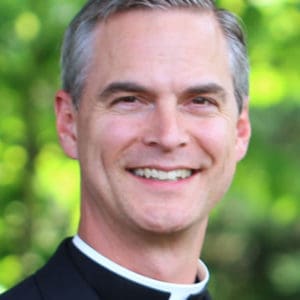![]() Some parents at the Catholic school where my child attends want to have a Halloween Party. I am really troubled by this. To me it seems clearly antithetical to our faith to celebrate a pagan ritual rooted in the idea that sacrifice to demonic spirits would ward off their punishment. Even if the meaning is watered down to mere costume wearing at this point, the practice still celebrates evil and minimizes its dangers and realities. Am I on target here or do I just need to relax and let this happen?
Some parents at the Catholic school where my child attends want to have a Halloween Party. I am really troubled by this. To me it seems clearly antithetical to our faith to celebrate a pagan ritual rooted in the idea that sacrifice to demonic spirits would ward off their punishment. Even if the meaning is watered down to mere costume wearing at this point, the practice still celebrates evil and minimizes its dangers and realities. Am I on target here or do I just need to relax and let this happen?
Let’s start by making some practical distinctions, and then reflect on the spiritual principle touched on by this question – a principle that comes into play more often than just on Halloween.
If the proposed Halloween party is to take place at the Catholic school, it is perfectly reasonable to be concerned. If the proposed party is to take place at the family’s house, your indignation should be a bit less strident, I would imagine, and should be mixed with compassion for this couple that may not be as educated as you are in the Catholic faith. In the second case, your reaction will depend on the quality of your relationship with that couple. If you know them, you may want to approach them to talk about it – after all, their idea of a Halloween party may have no relationship to demonic sacrifices or celebrating evil. If you don’t know the couple, you may want to make this an occasion to introduce yourself, or you may want to simply make sure your own children understand your concerns and have clear ideas about Halloween.
In any of the above cases, however, your goal should be to build momentum at the school to celebrate All Hallow’s Eve (an earlier name for “Halloween”) in a Catholic way. Kids like Halloween. If you appear to be stomping on their fun for religious reasons, you could easily created the impression that the Catholic faith leaves no room for fun. Bad (and wrong) idea.
Catholic Halloween?
So, what is the Catholic way to celebrate All Hallow’s Eve? When the Church’s Solemnity of All Saints was moved to November 1 (back in the ninth century), it gave Catholics a chance to baptize an ancient pagan tradition. The Celtic peoples used to celebrate their New Year on November 1, and they believed that the spirits of the dead, both good and evil, wandered earth again the night before. To protect themselves from those spirits, they had ceremonies involving costumes and fire – lighting bonfires to keep the ghouls away, and wearing sacred masks to scare them, for example. A later Roman tradition (pagan Rome) added trick-or-treating to the Celtic practice, as the Romans celebrated the harvest at the same time. (More fun facts and a more detailed history can be found at this resource list.) Baptizing these pagan customs simply involved interacting with the dead from a Christian perspective instead of a non-Christian one. And so, on November 1 we honor and ask for intercession from the saints – the dead who died in friendship with Christ and are now in heaven – while on November 2 we pray for the souls in purgatory – the dead who died in friendship with Christ but are still being purified from selfishness before they can enjoy the fullness of communion with God.
It isn’t hard to give a Halloween party a Christian spin, when this is understood. Costumes can be those of saints. Treats can be related to heaven. Games can be fun, celebrating the hope for eternal life…
Creative Evangelization
And that brings us to the spiritual principle at work here. As the Church expanded into pagan lands, Christians had to figure out how to communicate their faith to people with radically different world views. Almost always, the most fruitful interaction was that in which the Christians were able to find some seeds of truth or beauty in the pagan practices, embrace them, and show their more complete meaning in the Christian context. In other words, whenever missionaries met the pagans where they were at, the pagans more easily learned to understand and appreciate the Christian faith. On the other hand, when the Christians met pagan customs only with blanket condemnation, progress was harder to come by.
Let me quote Pope St. Gregory the Great’s advice to missionaries in seventh-century England in this regard (just so you don’t think I’m making it up):
Do not destroy the pagan temples, but instead sprinkle them with holy water, set up altars in them, and place relics there. In the places where it has been the pagan custom to offer sacrifices to their diabolical idols, allow them to celebrate Christian festivals instead, in another form, on the same date. For example, on the festival of the blessed Martyrs, have the faithful make bowers of branches, and organize love feasts there. In permitting the converted these external pleasures, the joys of the soul will be more easily acquired. We cannot wipe the whole post from these savage souls all at once. A man does not climb a mountain in great bounds, but by taking slow, steady steps. (Letter to Miletus, 601)
Today we are missionaries in a neo-pagan culture, in many ways. If we want to bring Christ’s wandering sheep back into the fold, we need to follow the same pattern of creative evangelization. I hope you can do so this upcoming Halloween.





